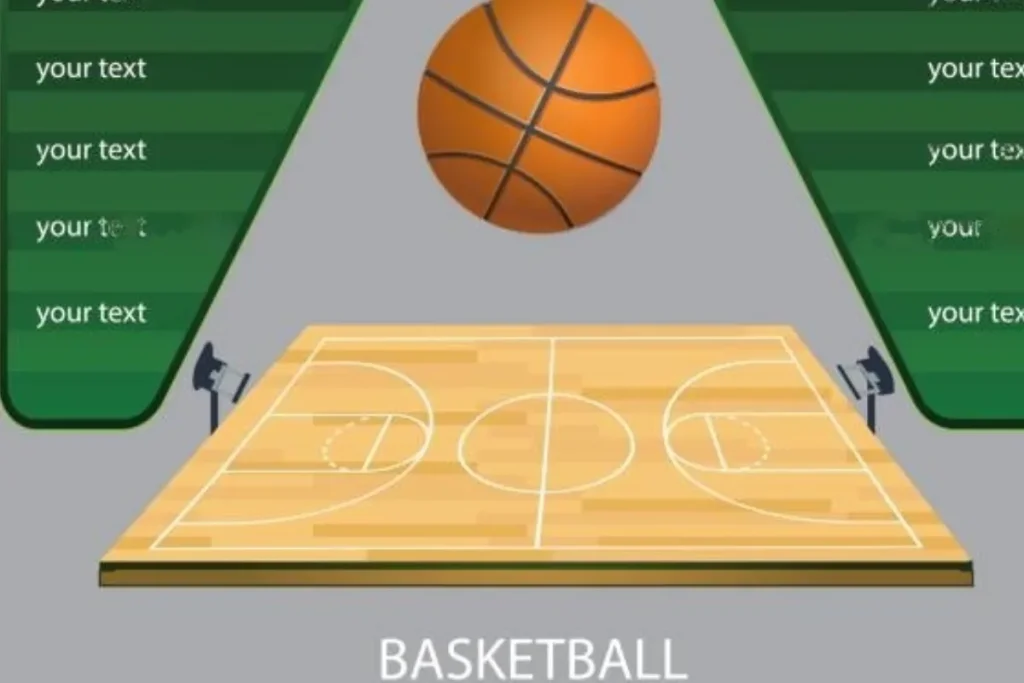How Long Is A Basketball Court?
Basketball has always been my passion, and as a player, I’ve spent countless hours on the court. One question that often pops up is, “How long is a basketball court?” Well, let me share my personal experience and shed some light on this intriguing topic.
Standard Dimensions of a Basketball Court
Basketball courts come in different sizes and configurations, but there are standard dimensions set by official bodies like FIBA (International Basketball Federation) and NBA (National Basketball Association). Let’s dive into the details of these standardized measurements.
The length of a regulation basketball court is 94 feet or approximately 28 meters. This measurement extends from baseline to baseline. It may seem quite long, but picture yourself dribbling the ball from one end to the other – it can be an exhilarating experience!
Now, let’s talk about width. A standard basketball court has a width of 50 feet or around 15 meters. This dimension provides enough space for players to maneuver and showcase their skills without feeling cramped.
One crucial aspect that adds excitement to the game is the three-point line distance. In both FIBA and NBA regulations, this line sits at a distance of 23 feet 9 inches or roughly 7.24 meters away from the center of the hoop.
Stepping beyond this line while taking a shot rewards you with three points instead of two.
Another significant feature on every basketball court is the key area, also known as “the paint.” Its dimensions vary slightly between FIBA and NBA rulesets. In FIBA games, the key area measures approximately 16 feet wide by just over 19 feet deep (4.9m x 5.8m), while in NBA games, it spans about four inches wider.
To help visualize these measurements better, refer to diagrams or visual representations available online or in rulebooks provided by official governing bodies such as FIBA and NBA.
Variations in Court Length
Basketball courts may seem like they have a fixed length, but did you know that court lengths can actually vary depending on different leagues and countries? Let’s explore these variations and understand the reasons behind them.
When we consider different leagues, such as college basketball versus professional leagues like the NBA, there are subtle differences in court dimensions. College courts typically measure 94 feet long, similar to NBA regulations. However, some college games may be played on smaller courts due to venue limitations or specific conference rules.
Now let’s talk about international play. The FIBA-sanctioned basketball competitions often feature courts with slightly different dimensions compared to those used by the NBA. FIBA regulation courts measure 28 meters long (approximately 91 feet) instead of the standard 94 feet found in most North American basketball arenas.
The variations in court length can influence gameplay strategies significantly. A shorter court allows for faster-paced games with quick transitions between offense and defense, while a longer court emphasizes endurance and strategic positioning over speed.
For example, a shorter court may lead to more frequent fast breaks and higher-scoring games due to reduced distances players need to cover. On the other hand, a longer court challenges teams to conserve energy strategically and rely more on half-court offenses rather than relying solely on transition plays.
Importance of Accurate Measurements

When it comes to basketball, accurate court measurements play a vital role in ensuring fair play and consistent competition. Let’s delve into why these measurements are so important and the potential consequences if they are not adhered to properly.
Imagine playing on a court where the length is shorter or longer than it should be. It would throw off the game’s dynamics, making it unfair for both teams. Accurate court measurements ensure that every player has an equal opportunity to showcase their skills and compete on a level playing field.
Not only does accuracy promote fairness, but it also ensures consistency across different venues. Whether you’re playing at home or away, knowing that each court adheres to standardized dimensions brings a sense of familiarity and allows players to adapt more easily.
In addition, accurate measurements impact gameplay strategies significantly. Players develop their techniques based on specific court dimensions – from shooting distances to defensive positioning.
Inaccurate measurements can disrupt these strategies, leading to confusion and affecting team performance.
Moreover, disregarding proper court dimensions may result in severe consequences. For instance, if a three-point line is incorrectly placed closer or farther from the hoop than regulations dictate, shots could be wrongly awarded two or three points instead of what they deserve.
frequently asked questions
1. Are there any basketball courts with non-standard sizes?
Yes, there are indeed basketball courts with non-standard sizes around the world. For example, some outdoor streetball courts may have unconventional dimensions due to space restrictions or creative design choices.
2. Can you give an example of a unique streetball court layout?
One famous example is “The Cage” in New York City’s West 4th Street Park. This iconic streetball court features a smaller playing area and tight sidelines, creating an intense and fast-paced game environment.
3. Are there any historic venues with distinctive basketball court designs?
Certainly! The Boston Garden, home of the Boston Celtics until 1995, had a parquet floor made up of interlocking wooden tiles arranged in a distinctive herringbone pattern—a design that became synonymous with the team’s success.
4. Have any countries experimented with alternative court layouts?
Yes, in recent years, FIBA has introduced experimental rules allowing for different key area shapes like trapezoids instead of traditional rectangular key areas. These experiments aim to explore potential variations that could impact gameplay strategies.
5. Are there any notable international locations known for their unique basketball courts?
Venues like Venice Beach in California and Rucker Park in Harlem, New York City have gained fame for their outdoor streetball courts where legendary players and aspiring athletes showcase their skills amidst vibrant local communities.
Conclusion
As I stood there, I couldn’t help but think about the significance of those dimensions. The length of the court sets the stage for competition, creating boundaries that shape gameplay strategies. It’s where athletes showcase their skills and teams battle it out in pursuit of victory.





